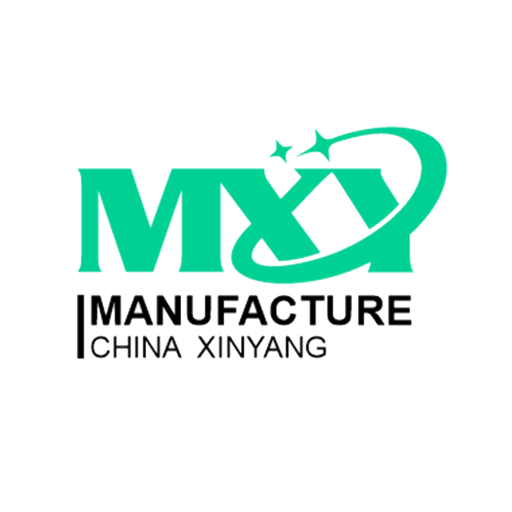.
.
.
.
.
.
What is CNC Machining: Definition, Process, Purpose & More
The CNC machining process offers many advantages because it is automated and uses computer-controlled machine tools to fabricate parts from raw materials. The process can produce many different parts with varying levels of complexity. CNC machining is often used in the aerospace, automotive, and medical industries, where specific parts must meet stringent specifications and tolerances in manufacturing processes.
CNC machining has made it possible to create objects a hundred times faster than a few decades ago.
So what is CNC machining and how does it work?
This article explores all you need to know about CNC machining, what it is, how it is done, different types and the benefits of the process.
Online CNC Machining Services for Custom Plastic and Metal Parts
What is CNC Machining?
CNC machining utilizes computer numeral control technology to shape a workpiece by removing material until the desired form is attained.
CNC is an acronym for Computer Numerical Control, which involves the use of computer software to dictate the movements and functions of a machine.
The desired output is achieved by converting a digital representation of a component into a series of computer commands that govern the operations of the machining tools.
CNC machining machinery operates on a range of materials, including metals, metal alloys, wood, stone, and others. The dimensions of the machine tools may differ depending on the particular part being produced.
CNC machining offers unparalleled levels of flexibility, productivity, and accuracy due to its computerized nature. As a result, it is widely favored across various industries and applications for manufacturing purposes.
Who Invented CNC Machining?
Since ancient times, the practice of shaping objects by removing material using milling tools has been consistently followed. However, in the context of the contemporary history of CNC machining, the concept of controlling machine tools through numerical control was introduced by John Parsons at MIT in 1949.
Development of CNC Machining
MIT carried out a research project in 1949 on behalf of the US Air Force to explore the use of motorized techniques in the production of helicopter blades, aircraft engines, and frames. This initiative ultimately led to the development of CNC technology.
In 1952, Richard Kegg made significant advancements to the numerical control machining process, resulting in the development of CNC milling machines.
The automated functionality of early CNC machining processes was facilitated by punched tape in the absence of computers. However, the introduction of digital computing in the 1960s led to the replacement of punched tape with computerized controls.
How Does CNC Machining Work?
CNC machining is dependent on computer programs to establish the framework of the process in which the machine tool is expected to operate. Given that users are unable to directly interact with the machine tools, Computer-Aided Design (CAD) software is employed.
The CAD software is utilized to generate both 2D and 3D models necessary for CNC machined parts. These designs enable the machine to visualize the appearance of the final part.
The automated controls perform the necessary calculations to eliminate material, resulting in the workpiece resembling the final part designed in the CAD software.
Let’s explore the breakdown of different processes that take place during CNC machining.
The Four Stages of CNC Machining
CNC machining consists of four distinct stages.
Stage 1: Creating the CAD Model
Prior to commencing CNC machining, it is necessary to have a 2D or 3D model of the final design. Such a model is typically produced using CAD software. Numerous CAD software options can be found online, both free and paid.
Generating CAD models is a manageable task that can be easily acquired through learning. Nevertheless, certain intricate components may necessitate a higher level of CAD expertise, in which case skilled designers can be enlisted.
Stage 2: Converting CAD Model to CNC File
CNC machines do not have the capability to interpret CAD language directly. Instead, they rely on coordinates to determine movement. As a result, CAD models need to be converted into a G code file that CNC machines can comprehend.
Numerous CAD software applications have the capability to directly generate G code as the output file by utilizing a specific configuration prior to saving the file.
Converting the CAD design to G code in some instances necessitates the use of specialized software known as Computer Aided Manufacturing (CAM). CAM software proves to be an essential tool in streamlining machine operations through automation.
In addition to utilizing CAM software, numerous uncomplicated free tools are available to effortlessly convert basic CAD designs into G code with a single click. Nevertheless, these tools lack the extensive range of features provided by CAM software.
Stage 3: Configuring the CNC Machine
Prior to commencing production operations, it is essential to properly configure the CNC machine.
Consider this as setting up the printer prior to printing. It is essential to load the printer with paper and verify certain configurations. CNC machines function in a comparable manner.
Prior to commencing the machining process, several setup procedures need to be carried out. This includes verifying the correct positioning of the workpiece on the machine, ensuring the dies are accurately set, and adjusting other position settings as necessary.
Stage 4: machining operation execution
After the configuration stage has been finalized, the machine can commence its operation. To initiate this process, you may execute the program through the display panel of the CNC machine.
Depending on the nature of your design, you may encounter a range of program prompts that allow you to select from a variety of settings and options.
Upon execution of the CNC program, the machine will continue operating until the program is completed. The machine will only come to a halt if manually turned off by the operator, or in the event of an unforeseen error or power outage.
Main Terminologies in CNC Machining
It is of utmost importance to have a thorough understanding of CNC machining terminology within this industry. Several frequently used terms associated with CNC include:
Computer-Aided Design (CAD)
Computer-Aided Design (CAD) is a software that generates the graphical depiction of the desired end product in either 2D or 3D format. Typically, intricate components are manufactured by dividing them into smaller sections, with each section having its own CAD model.
AutoCAD and FreeCAD are among the most widely used CAD software, the latter of which is available at no cost.
Computer-Aided Manufacturing (CAM)
CAM software is responsible for creating CNC programs that are compatible with various machines, such as CNC machines, in order to streamline the manufacturing process.
CAM software collaborates with CAD programs to carry out operations using a CNC machine. The majority of high-quality CNC machines are equipped with accompanying CAM software.
Distributed Numerical Control (DNC)
In a setup for Distributed Numerical Control (DNC), numerous machine tools have the capability to link to a central server. The central server is responsible for handling the design files and transmitting instructions to each machine tool individually.
DNC is employed when the memory capacity of an individual CNC machine is insufficient to handle the software. It can also be utilized in situations where multiple numerical control machines need to work in sync to enhance operational efficiency.
Manufacturing Data Collection (MDC)
The purpose of Manufacturing Data Collection (MDC) is self-explanatory. This software gathers data from both machines and operators regarding various real-time manufacturing information.
This data assists manufacturers in enhancing their current production line. Additionally, it identifies the factors contributing to any production delays and losses.
What are G-code and M-code?
G-code and M-code are essential files for the operation of a CNC machine. These files hold significant importance, and we will now delve into their individual significance.
G-code
The letter ‘G’ in G-code stands for Geometry, thus making G-code a Geometric code. G-code is a series of alphanumeric instructions that dictate the movements of the CNC machine.
The references in G-code for movement axes are denoted by X, Y, and Z, while the numerical value corresponds to the specific axis. The line number is represented by N.
Certain codes are designated for distinct operational functions of the machine, like modifying the spindle speed or activating and deactivating the spindle.
M-Code
M-codes encompass a range of machine codes that execute various non-cutting functions on the CNC machine. These functions encompass initiating and terminating different programs, regulating the flow of coolant, and modifying the operational characteristics of machining tools.
What are the Different Types of CNC Machining Processes?
CNC machines are not singular entities, but rather a collection of diverse types of CNC machines that are utilized for a variety of machining processes. Several commonly used CNC machining operations are:
CNC Milling
CNC milling is widely recognized as a highly favored form of CNC machining. In fact, numerous proficient machine shops frequently employ CNC machining and CNC milling processes interchangeably. Among the various CNC mill applications, face milling and peripheral milling are notably prevalent.
In a CNC milling machine, the workpiece undergoes material removal as rotating cutting tools move in relation to it.
The milling tool, also known as the cutting tool, is securely attached to a spindle that has the capability to rotate. By utilizing the rotation and movement of the spindle, CNC milling machines are able to execute milling operations involving three or more axes.
CNC Drilling
The process of CNC drilling is much easier compared to the utilization of milling tools or the turning process. In CNC drilling, the workpiece remains fixed while a drill bit traverses over it, forming holes.
Drilling holes serves various purposes such as installing screw bolts, meeting aesthetic needs, or fulfilling other functional requirements.
CNC Grinding
CNC grinding machines utilize a flat abrasive wheel that rotates to eliminate material from the surfaces of rough workpieces. This method is commonly employed to produce a finely finished component, with the grinding wheel spinning at a significantly high velocity.
CNC Routing
CNC routers and CNC milling machines share many similarities. However, the key distinction lies in the fact that in a CNC router, the workpiece remains stationary while the cutting tool moves along the X, Y, and Z axes. This unique setup allows CNC routers to achieve faster cuts compared to milling machines, all while maintaining precision and accommodating intricate designs.

Other Types of CNC Machines and CNC Operations
In addition to the aforementioned types, there exist several other CNC processes as well. Certain autonomous fabrication machines have been incorporated with a CNC system to enable automatic movement. A few examples of these supplementary CNC machines include:
Broaching
Broaching employs a toothed cutting head to form specialized shapes on a workpiece. The cuts made by broaching are remarkably uniform and exceedingly precise. These machines can either be linear or rotary, utilizing a rotating toothed cutting tool.
Sawing
Sawing involves the use of a serrated blade to produce straight and linear cuts. These cuts are made by removing material through the friction caused by the saw blade. When combined with CNC technology, this method is commonly employed for the automated cutting of various materials.
Honing
Honing is akin to grinding as it is typically employed for the secondary refinement of a material. During honing, an abrasive stone or wheel is utilized to precisely grind the workpiece, resulting in the desired shape, size, or finish.
Lapping
Lapping bears resemblance to grinding as it aims to achieve a smooth surface finish. However, unlike grinding which employs a grinding wheel, lapping involves the utilization of an abrasive paste, powder, or mixture. This abrasive mixture is placed between two materials, with one of them being the workpiece, and subsequently, they are rubbed against each other.
CNC lathes
CNC lathes serve as essential tools for shaping metal or wood through machining. Within a lathe machine, the workpiece undergoes rotation around a central axis, while the machining head moves linearly across the surface. With their capabilities, CNC lathes can execute a range of functions including cutting, drilling, sanding, knurling, facing, and more. In comparison to manual lathes, CNC lathes exhibit superior performance.
Plasma Cutters
Plasma cutters represent an advanced iteration of cutting technology, employing a high-temperature plasma jet for material cutting purposes. The plasma is generated through an electrical arc, making this technique suitable exclusively for conductive materials.
Laser Cutters
Laser cutters employ a laser beam to slice through various materials. Unlike plasma cutting, laser cutting is not restricted to electrically conductive substances. By adjusting the laser parameters, laser beams possess the capability to cut through any material.
Flame Cutters
Flame cutting involves the use of an Oxy-acetylene (also referred to as Oxy-fuel) gas mixture to effectively cut metals. By narrowing and igniting the Oxy-fuel stream, a high-temperature flame is produced, allowing for easy metal cutting.
Press Brakes
Press Brakes are designed to facilitate the bending of metal plates and sheets. This is achieved by positioning the material between a die that is either V-shaped or U-shaped. Subsequently, the die is pressed, effectively producing the desired bend.
Electric Discharge Machines (EDM)
EDMs, also known as Electrical Discharge Machines, are utilized for the purpose of cutting conductive materials. In this process, a cutting head emits electrical pulses in close proximity to the material, thereby generating an electrical arc. The arc effectively melts and eliminates the material at the designated position, ultimately resulting in a precise cut.
Water Jet Cutters
Waterjet cutters employ extremely high-pressure water to perform the cutting process. They have the capability to cut through a variety of materials such as metal, alloy, wood, stone, and glass. The movement of the water jet stream is precisely controlled by CNC technology and guided by the software.
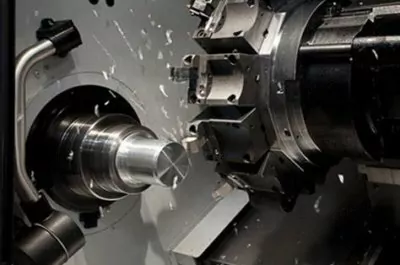 CNC Turning
CNC Turning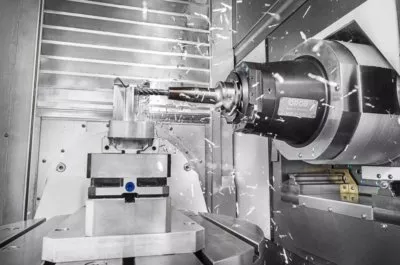 Horizontal CNc Machining
Horizontal CNc Machining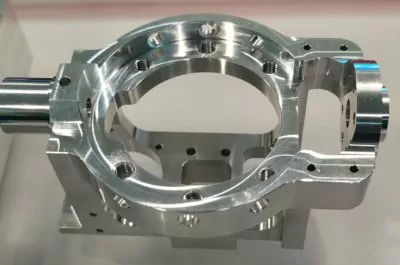 Metal Machining
Metal Machining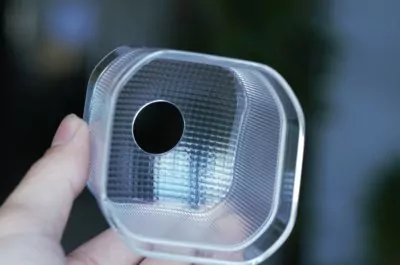 Plastic Machining
Plastic Machining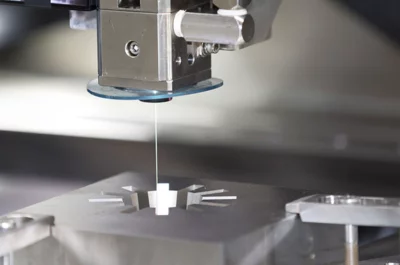 Precision Wire EDM
Precision Wire EDM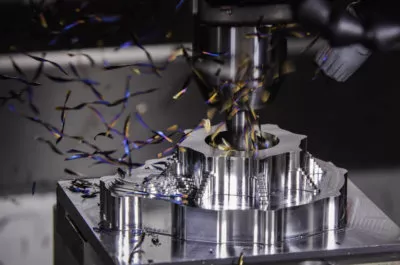 Vertical CNc Machining
Vertical CNc Machining
Selecting the right CNC machine for the jo
It is crucial to determine the most appropriate type of machine for the specific parts when manufacturing CNC machined components.
It can be challenging to locate a comprehensive range of CNC machines in a single location, as each machine has its advantages and disadvantages. However, one might have better luck finding such a collection at a machine trade show or a CNC shop that is willing to make substantial investments.
In case the optimal machine is unavailable, it is necessary to devise a method to produce the parts using the machines that are accessible. Below are clarifications regarding vertical versus horizontal milling and turning machines.
Figuring out the best way to load the workpieces
Once you have selected the CNC machine for producing your parts, the subsequent crucial step is determining the optimal method for loading your workpieces before proceeding with programming. In my view, this phase holds greater significance than creating the tool paths. However, based on my observations, many machinists encounter challenges at this stage, impeding their progress in a seamless manner.
As a company specializing in prototype machining, we strive to recruit individuals with a flexible mindset and the ability to problem-solve within this field, as we encounter various CNC parts on a daily basis. (Naturally, there are instances where certain individuals resign from their positions within a fortnight!) Explore the diverse CNC workholding techniques available.
Knowing what type of cutting tool to use
Once the machines have been selected and the optimal method for producing the parts has been determined, the correct choice of cutting tools is essential for achieving improved tolerance and surface finish quality. Essentially, the use of appropriate cutting tools leads to enhanced components.
For instance, the process of milling ribs with draft could consume a significant amount of time if conventional sphere cutting tools are used. However, by employing a taper cutter, the same task can be completed in a matter of minutes.
Consider the amount of time you could potentially save by milling 10 or more pieces. Discover the distinctions among various types of CNC cutting and machining tools.
What are the Advantages of CNC Machining?
CNC machining technologies have transformed the manufacturing sector by reducing the need for manual labor and enabling exceptional levels of precision and consistency. It is widely regarded as a contemporary blessing because of its multitude of benefits.
It is crucial for a product designer to determine whether to utilize CNC machining or opt for a different manufacturing process when designing parts.
Below is a concise summary of several notable advantages:
Production Speed
The rapid dissemination of CNC machining can be attributed to its ability to significantly increase production speed by eliminating the constraints of manual labor.
Consistency
CNC machining guarantees uniformity in the appearance and functionality of all produced parts, eliminating the risk of human error. This results in the production of accurate components that fulfill their intended function.
Reduction of Rejections
In traditional manufacturing methods that relied on manual labor, a significant amount of human error was observed, leading to the rejection of products during quality control. This not only consumed a considerable amount of time but also wasted valuable resources. However, the implementation of CNC machining has revolutionized the manufacturing process by automating it entirely, resulting in a significant reduction in product rejections.
Cost Saving
Labor expenses encompass the wages disbursed to the workforce, periods of inactivity during breaks, and the supplementary compensation disbursements.
CNC machining’s precision, swiftness, effectiveness, and automation contribute to cost reduction in manufacturing by minimizing production durations and labor requirements. These cost savings can be transferred to customers, resulting in a competitive edge and offering a chance for reinvestment in the business.
Nevertheless, there are various elements that influence the expenses associated with CNC machining, such as the volume of production, the choice of materials, and the complexity of the design.
Material Versatility
CNC machining is capable of being carried out on nearly any material that possesses the required hardness.
Manufacturing Data Tracking
The CNC machine provides manufacturing data enabling manufacturers to monitor the complete process for each part. They can identify the specific machines used in the manufacturing of each part. If a fault occurs, the precise cause can be promptly identified.
Accuracy
CNC machining enables the attainment of precision at a microscopic scale, a threshold that can be further extended by utilizing suitable tools. This degree of accuracy cannot be reached through manual processes.
Please peruse our comprehensive article exploring the advantages of CNC machining for an in-depth analysis of its benefits.
What Materials Can Be Processed By CNC Machines?
CNC machining allows for the processing of a diverse array of materials without the need for separate machines. The majority of CNC machines are versatile enough to handle various materials, making it easy to transition between manufacturing different components by simply changing the tooling.
Metals
Metal is a frequently used material in CNC machining due to its hardness, which can make manual machining slow, difficult, and less accurate. CNC machines offer a superior and more efficient method for working on metal components.
Certain metals are utilized in the production of components using CNC machines:
- Aluminum: Aluminum, being the most abundant metal on earth, is not only widely available but also extensively utilized in CNC machining. Its exceptional strength-to-weight ratio renders it suitable for manufacturing lightweight components that necessitate considerable strength.
- Magnesium: Magnesium is predominantly employed in the fabrication of the external casing of electronic devices. This is due to the fact that Magnesium is 33% lighter than Aluminum, rendering it an ideal choice for minimizing the overall weight of electronic gadgets such as laptops.
- Titanium: Titanium is renowned for its exceptional strength and durability, making it one of the most resilient materials available. It is extensively utilized in aerospace, military, and various other industries that demand top-notch quality and performance. CNC machining is employed to shape and refine titanium components, ensuring precision and reliability in its applications.
- Cast Iron: CNC machining components made from cast iron offer a significant advantage in terms of production speed compared to steel, resulting in reduced tool wear.
Alloys
CNC machines exhibit equal proficiency in working with both metals and metal alloys. The following are the typical alloys that undergo CNC machining:
- Stainless Steel: Stainless Steel is a widely favored type of steel known for its durability and various physical characteristics, making it ideal for shaping through the CNC machining method.
- Carbon Steel: Carbon steel is the most commonly utilized alloy globally due to its cost-effectiveness compared to stainless steel and superior strength. CNC machines are capable of accurately shaping carbon steel.
- Brass: Brass, known for its softness and corrosion resistance, encompasses a wide range of compositions consisting of zinc and copper. The versatility of these brass variations allows for CNC machining to be performed on all of them.
Plastic
CNC machining is not widely known for its ability to shape plastic parts, yet it is a common practice in modern manufacturing. Some of the common plastics used include:
- Nylon: Nylon possesses remarkable strength, flexibility, and fire resistance. In certain cases, Nylon CNC machined components are employed as substitutes for metal parts due to Nylon’s advantageous lubrication properties.
- ABS: ABS plastics are frequently utilized in applications such as injection molding owing to their thermoplastic characteristics. Nevertheless, when it comes to creating prototypes, opting for CNC machining ABS is the superior approach.
- PMAA: PMAA Acrylic is a durable and transparent type of plastic. As a result, it is commonly employed as a substitute for glass in various applications such as optical instruments and food storage containers.
- PEEK: PEEK stands out as a high-cost plastic known for its outstanding temperature resistance and physical characteristics. The CNC machining of PEEK is commonly utilized in the aerospace and medical sectors.
Wood
Wood is a frequently utilized material in CNC machining. Its soft nature makes it easy to work with. One of the most popular uses for wood in this process is crafting furniture.
What are the Applications of CNC Machining?

CNC machining is utilized across various industries, ranging from tool manufacturing to the production of finished goods.
Below is a summary of several applications of the CNC machining process:
- Vehicles: CNC machining is employed to manufacture the structures, motors, and various miniature parts for a wide range of transportation vehicles, encompassing automobiles, locomotives, and aircraft.
- Metal Fabrication: The CNC tools are essential for various projects in the metal fabrication industry.
- Electronics: CNC machining is utilized by the electronics sector to produce appliance frames.
- Research and Development: CNC machining is the preferred method for producing prototypes due to its ability to fabricate objects from 2D or 3D digital designs.
- Defense: High-quality CNC machines are utilized for robust defense activities, including the production of weapons, aircraft, and other equipment.
- Architecture: CNC machining is utilized in the production of art and decorative items. An example of this is the detailed stonework found in kitchens, which is crafted using CNC-controlled waterjet cutting tools.
- Robotics/automation: CNC machining enables swift prototyping by facilitating swift and frequent adjustments, as well as the production of intricate robotic components. These capabilities are crucial for achieving triumph in the rapidly expanding and pioneering realm of robotics.
- Medical: CNC machining plays a crucial role in the fast-moving medical device industry by facilitating quick prototyping for testing and validation purposes. Additionally, it produces top-notch end-use parts that are essential in a wide range of applications, including orthotic devices and MRI machines.
How Does CNC Machining Compare to Other Machining Methods?

CNC machining stands as the sole viable option to traditional manual machining. Undoubtedly, CNC machining surpasses any manual technique by a significant margin.
Some of the points to consider about CNC machining vs. manual machining are:
- Nowadays, industries adhere to a manufacturing process that is capable of meeting high-volume demand. CNC machining plays a crucial role in effectively fulfilling this demand, unlike manual production methods which are unable to produce parts at the necessary rate.
- Utilizing CNC machines allows for the allocation of physical labor towards essential and cognitive responsibilities.
- CNC machines eliminate the human error factor that is present in manual machining. This leads to better utilization of resources by lowering the number of defective pieces.
- Manual machining is limited by human physical capabilities, preventing it from accomplishing various tasks, especially those involving extremely hard materials. On the other hand, CNC machining excels in completing these challenging tasks effortlessly.
- CNC machining eliminates interruptions caused by lunch breaks or shift changes, ensuring continuous operation. Moreover, the ability to run production around the clock significantly boosts productivity.
Are CNC Machines Hard to Operate?
Each CNC machine comes with specific operating instructions. In general, these machines are user-friendly and do not necessitate the operator to complete a technical training in order to operate them.
Indeed, with just a few hours of tutorial videos available abundantly online, you can easily create fundamental components.
To excel in CNC machining, dedicate time to mastering the design aspect for CAD drawings. By acquiring the skills to produce technical drawings and develop effective digital programming code, you will enhance the efficiency of the current manufacturing process employed by a CNC machine.
Is CNC a Good Career?
CNC offers a fulfilling career that provides not only financial rewards but also job satisfaction. CNC operators engage in practical problem-solving to develop efficient and cutting-edge machinery.
Is CNC in High Demand?
With the widespread adoption of CNC machines in various industries, the need for CNC operators has significantly increased in recent times.
What are the Trends in the CNC Machining Industry?
The main trends present in the CNC industry are:
- Enhancing additional axes to produce intricate geometries to the highest degree.
- The utilization of robotics has been enhanced to achieve complete automation of the entire process.
- Advancement in CAD and CAM programming language to incorporate the latest functionalities.
- Enhanced nanoscale workability suitable for semiconductor applications.
Key Takeaways
CNC machining technology serves as the foundation of contemporary manufacturing. Commencing with rudimentary raw materials, the CNC machining process has the capability to transform them into any desired object.
CNC machining technology serves as the foundation of contemporary manufacturing. Commencing with rudimentary raw materials, the CNC machining process has the capability to transform them into any desired object.
CNC machine tools are the preferred choice for producing prototypes, small-scale samples, or large-scale production runs.
One advantage is that you can enjoy the benefits of the process without the need to possess any CNC machining equipment.

